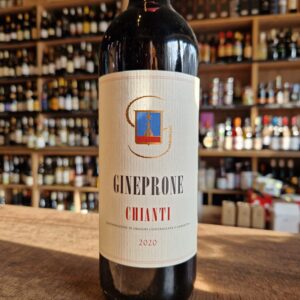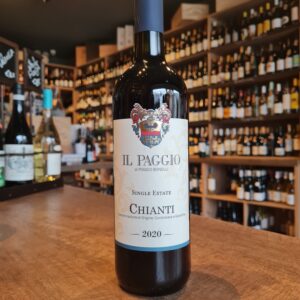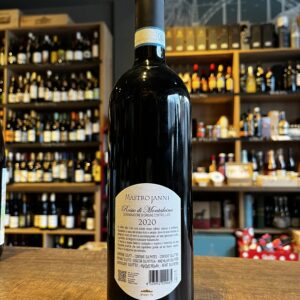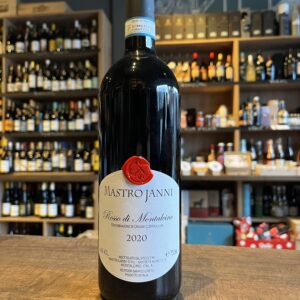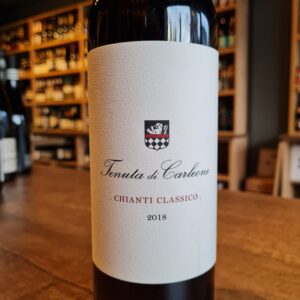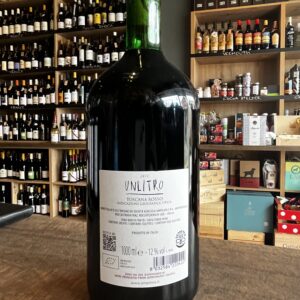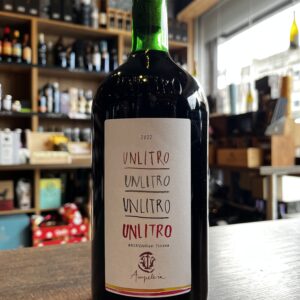Sangiovese (or Nielluccio in Corsica), a dark-berried vine, is the most widely planted grape variety in Italy. Virtually synonymous with the red wines of Tuscany, and all the romanticism that goes with the territory, Sangiovese is the core constituent in some of the great names in Italian wine.
-
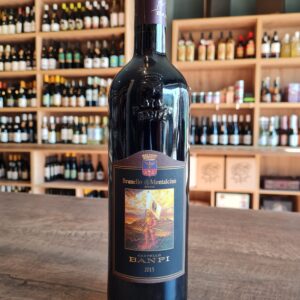 A classic from Castello Banfi in Montalcino.Elegant and balanced Brunello, characterized by a sweet, rich and complex aroma of fruit jam. A wine with great structure that is well balanced by a good softness and acidity on the final. Extremely persistent with excellent aging potential. Game, red meats or aged cheese. Or just on it's own with good company!
A classic from Castello Banfi in Montalcino.Elegant and balanced Brunello, characterized by a sweet, rich and complex aroma of fruit jam. A wine with great structure that is well balanced by a good softness and acidity on the final. Extremely persistent with excellent aging potential. Game, red meats or aged cheese. Or just on it's own with good company! -
Out of stock
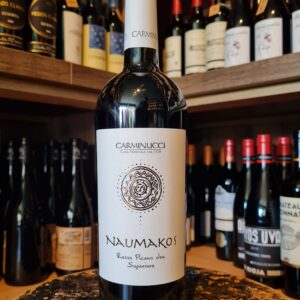 The Carminucci company, with its 90 years of history, is inserted in the wonderful wine landscape of the Marche, a region that gives powerful emotions thanks to its landscapes and a geographical conformation that allows it to have very particular climatic excursions. Kissed by the Adriatic and pampered by the hills, this region, rich in native vines and wine culture, offers a wine obtained from a blend rich in charm such as Rosso Piceno, which we tasted in its "superior" version. Montepulciano, combined with Sangiovese, ages in small and large barrels to bring to the table a product with marked minerality and softness, strength and structure, always sweetened by fresh notes that make it unique in its characteristics. The color is rich in anthocyanins, the light is unable to penetrate the richness of color of this red wine, but the first impact on the nose makes it less austere than you might imagine. Ample in its aromas of red fruit and slightly spicy in sweet notes, Carminucci's Rosso Piceno is a pleasant wine from the first sip for its authenticity and balance. If you leave it in your mouth for a moment, warm Mediterranean flavors emerge combined with a pleasant note of licorice, a balanced alcohol that has a strong but never invasive structure. Its harmony is given by the set of sensations and gustatory touches, a frank and very balanced wine, it combines the sapidity of the area with an acidity that leads it to be a long-lived wine with excellent resistance over time. Excellent with red meats or game.
The Carminucci company, with its 90 years of history, is inserted in the wonderful wine landscape of the Marche, a region that gives powerful emotions thanks to its landscapes and a geographical conformation that allows it to have very particular climatic excursions. Kissed by the Adriatic and pampered by the hills, this region, rich in native vines and wine culture, offers a wine obtained from a blend rich in charm such as Rosso Piceno, which we tasted in its "superior" version. Montepulciano, combined with Sangiovese, ages in small and large barrels to bring to the table a product with marked minerality and softness, strength and structure, always sweetened by fresh notes that make it unique in its characteristics. The color is rich in anthocyanins, the light is unable to penetrate the richness of color of this red wine, but the first impact on the nose makes it less austere than you might imagine. Ample in its aromas of red fruit and slightly spicy in sweet notes, Carminucci's Rosso Piceno is a pleasant wine from the first sip for its authenticity and balance. If you leave it in your mouth for a moment, warm Mediterranean flavors emerge combined with a pleasant note of licorice, a balanced alcohol that has a strong but never invasive structure. Its harmony is given by the set of sensations and gustatory touches, a frank and very balanced wine, it combines the sapidity of the area with an acidity that leads it to be a long-lived wine with excellent resistance over time. Excellent with red meats or game. -
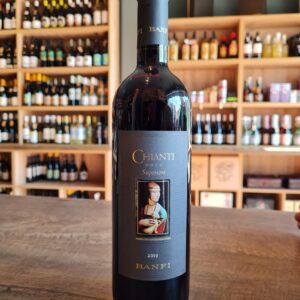 The Banfi Chianti Superiore begins with a very nice aroma of black cherry, plum, a little spice, a little earth and some nice floral notes. Tasting the wine reveals plum, oak,licorice a bit of spice, a nice dense and velvety texture plus dusty tannins = One Terrific Tuscan! Add in good acidity and balance on this medium-bodied wine and you quickly realize this wine is delivering great value for its price. The finish is very nice with good length and features some excellent slightly sour black cherry notes. Try with BBQ-marinated pork ribs, beef and vegetable skewers or T bone steaks. I am a big fan of Tuscan wines specially Banfi, would confidently recommend it.
The Banfi Chianti Superiore begins with a very nice aroma of black cherry, plum, a little spice, a little earth and some nice floral notes. Tasting the wine reveals plum, oak,licorice a bit of spice, a nice dense and velvety texture plus dusty tannins = One Terrific Tuscan! Add in good acidity and balance on this medium-bodied wine and you quickly realize this wine is delivering great value for its price. The finish is very nice with good length and features some excellent slightly sour black cherry notes. Try with BBQ-marinated pork ribs, beef and vegetable skewers or T bone steaks. I am a big fan of Tuscan wines specially Banfi, would confidently recommend it. -
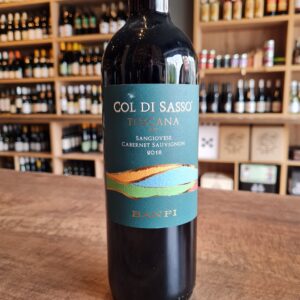 Col di Sasso meaning Stony Hill – the blend of Cabernet Sauvignon and Sangiovese cultivated on the most rocky and impervious slopes of the Banfi estate in Montalcino. A young, but intense wine. The color is ruby red with purple shades. The wine shows intense and fruity scents of black currant, cherry and other red fruits. The structure is soft and magnificently sustained by a good acidity, resulting from the sweet and mellow tannins. The finish is pleasant and with a balanced complexity.
Col di Sasso meaning Stony Hill – the blend of Cabernet Sauvignon and Sangiovese cultivated on the most rocky and impervious slopes of the Banfi estate in Montalcino. A young, but intense wine. The color is ruby red with purple shades. The wine shows intense and fruity scents of black currant, cherry and other red fruits. The structure is soft and magnificently sustained by a good acidity, resulting from the sweet and mellow tannins. The finish is pleasant and with a balanced complexity. -
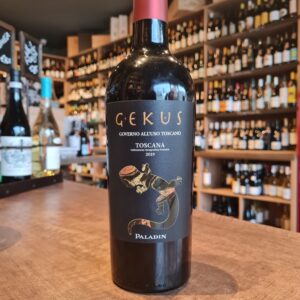 There are many ways in which to fall in love with Tuscany, not the least of which is through the region’s wonderful wines—or its landscape, its people, its food, and its art. Paladin's example of Super Tuscan wines comes in this form. A local take on the classic Bordeaux-style blend of Cabernet Sauvignon, Merlot, and Syrah (and sometimes Cabernet Franc), these wines were developed, in part, as a reaction to the restrictive regulations in Tuscany during the 1970s. At the time they emerged, they were considered some of the region’s best reds. Yet, somewhat ironically, they were technically table wine. In 1994, their Vino da Tavola (VdT) status was elevated to the Indicazione Geografica Tipica (IGT) denomination, which officially endowed these non-traditional wines with a premium quality rating just below the Denominazione di Origine Controllata (DOC), which at that time was reserved for more traditional regional wines. The tonneau used at Paladin hold 2 to 3,000 litters. Very impressive if you compare the barrels with a normal barrique barrel. Even though Gekus is only aged for 3 months, the body that it has is quite pronounced and it is indicative of the extraction done with the grapes. The bottle itself already shows through its weight that we are about to encounter something phenomenal, something heavy, something Super. The palate is complex and you can feel the residual sugar without it being sweet to a point of being unpleasant. Recommended with red meat, it is traditionally very popular with pici (thick spaghetti) with meat sauce. Serve at room temperature.
There are many ways in which to fall in love with Tuscany, not the least of which is through the region’s wonderful wines—or its landscape, its people, its food, and its art. Paladin's example of Super Tuscan wines comes in this form. A local take on the classic Bordeaux-style blend of Cabernet Sauvignon, Merlot, and Syrah (and sometimes Cabernet Franc), these wines were developed, in part, as a reaction to the restrictive regulations in Tuscany during the 1970s. At the time they emerged, they were considered some of the region’s best reds. Yet, somewhat ironically, they were technically table wine. In 1994, their Vino da Tavola (VdT) status was elevated to the Indicazione Geografica Tipica (IGT) denomination, which officially endowed these non-traditional wines with a premium quality rating just below the Denominazione di Origine Controllata (DOC), which at that time was reserved for more traditional regional wines. The tonneau used at Paladin hold 2 to 3,000 litters. Very impressive if you compare the barrels with a normal barrique barrel. Even though Gekus is only aged for 3 months, the body that it has is quite pronounced and it is indicative of the extraction done with the grapes. The bottle itself already shows through its weight that we are about to encounter something phenomenal, something heavy, something Super. The palate is complex and you can feel the residual sugar without it being sweet to a point of being unpleasant. Recommended with red meat, it is traditionally very popular with pici (thick spaghetti) with meat sauce. Serve at room temperature. -
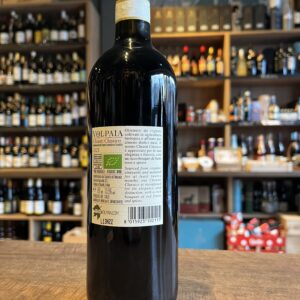
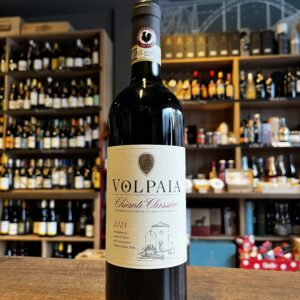 The oldest Italian Wine appellation. The first official document citing the Chianti wine is dated 1398. But it’s only in 1716 that the Granduke of Florence Cosimo III de’ Medici officialy sets the boundaries of the Chianti region where Chianti Classico wine is now produced (but not Chianti wine). Since 2007 Chianti Classico is made with up to 100% of Sangiovese and no more than 20% of other authorized red berry varieties of wich none should exceed 15% alone.
The oldest Italian Wine appellation. The first official document citing the Chianti wine is dated 1398. But it’s only in 1716 that the Granduke of Florence Cosimo III de’ Medici officialy sets the boundaries of the Chianti region where Chianti Classico wine is now produced (but not Chianti wine). Since 2007 Chianti Classico is made with up to 100% of Sangiovese and no more than 20% of other authorized red berry varieties of wich none should exceed 15% alone. -
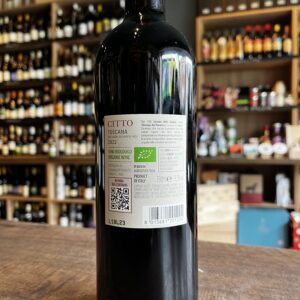
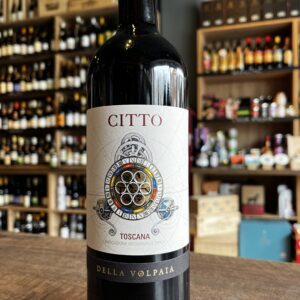 Castello di Volpaia overlooks the village of Radda in Chianti. The town was built in the 11th century as a fortified village on the border of Florence and Sienna. Although only part of the original protective walls and two of its six towers are still standing, the medieval layout and buildings within the village are still intact, making Volpaia one of the best preserved villages of its period. Just as it has been for the last 900 years, the entire village is intimately involved in the production of wine and olive oil. The cellars, bottling plant, barrels and olive press are nestled within the original stone walls that have been carefully restored by owners Carlo Mascheroni and Giovanella Stianti Mascheroni and their children, Nicolo and Federica. The nearly 114 acres of vineyards owned by Castello di Volpaia are at 1,300-2,130 feet above sea level, making Volpaia the highest winery in the Chianti region. The land is comprised of soils consisting largely of sandstone and a sedimentary rock from the Pliocene era. Citto is made from a selection of the best grapes from our IGT vineyards in the Chianti Classico and Maremma areas In the Tuscan dialect Citto means young boy. As from the land in comes from Citto is the young boy of Volpaia.As in the French tradition of the great Bordeaux Chateaux Chateau Mouton Rotschild has Mouton Cadet and Chateau Cheval Blanc has Petit Cheval, the same way Castello di Volpaia has his Citto. Pair with red meats and charcuterie
Castello di Volpaia overlooks the village of Radda in Chianti. The town was built in the 11th century as a fortified village on the border of Florence and Sienna. Although only part of the original protective walls and two of its six towers are still standing, the medieval layout and buildings within the village are still intact, making Volpaia one of the best preserved villages of its period. Just as it has been for the last 900 years, the entire village is intimately involved in the production of wine and olive oil. The cellars, bottling plant, barrels and olive press are nestled within the original stone walls that have been carefully restored by owners Carlo Mascheroni and Giovanella Stianti Mascheroni and their children, Nicolo and Federica. The nearly 114 acres of vineyards owned by Castello di Volpaia are at 1,300-2,130 feet above sea level, making Volpaia the highest winery in the Chianti region. The land is comprised of soils consisting largely of sandstone and a sedimentary rock from the Pliocene era. Citto is made from a selection of the best grapes from our IGT vineyards in the Chianti Classico and Maremma areas In the Tuscan dialect Citto means young boy. As from the land in comes from Citto is the young boy of Volpaia.As in the French tradition of the great Bordeaux Chateaux Chateau Mouton Rotschild has Mouton Cadet and Chateau Cheval Blanc has Petit Cheval, the same way Castello di Volpaia has his Citto. Pair with red meats and charcuterie


